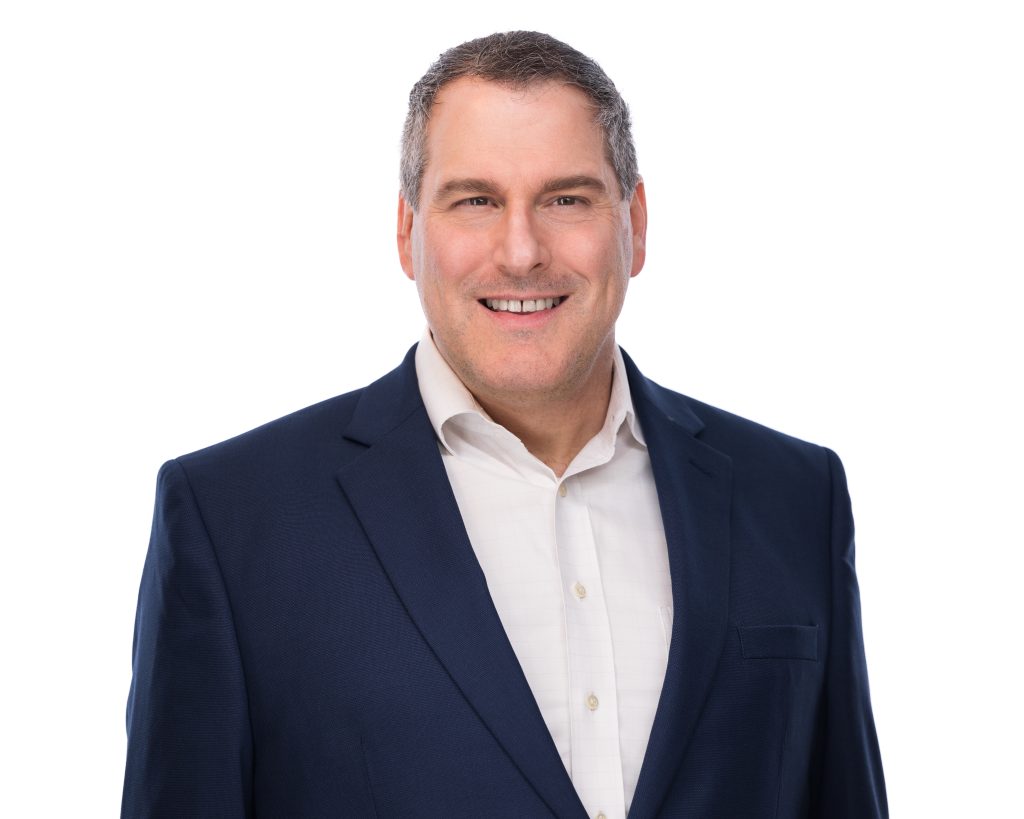Jeff DeSandre, Chief Information Officer, AmerCareRoyal, tells us how AmerCareRoyal found a partner in Open Systems that became the centerpiece of its security program.
AmerCareRoyal provides disposable products for the food service and hospitality industries.
Based in the US, the company has a dedicated supply chain engine that unifies eight individual companies brought together by acquisition to deliver more than 6,000 types of products to its customers. The company must ensure its supply chain is secure and experiences minimal disruption to keep orders moving as they chart a path to integrate eight business units.
If you’ve visited a chain restaurant to pick up a quick dinner or watched a game at a stadium in the US and bought food from a vendor, you might have been handed an AmerCareRoyal product.
AmerCareRoyal distributes the disposable plates, cups, cutlery and other items food service establishments need to serve their customers on-the-go. The company also supplies back-of-the-house kitchen and food safety items – in addition to everything needed for dining-in or takeout.

“We are a supply chain company and we source, make and move materials to our customers and our distributors,” said Jeff DeSandre, Chief Information Officer, AmerCareRoyal.
For AmerCareRoyal, what started as two companies merging in 2016 was the beginning of a pattern of mergers and acquisitions of eight companies in total. Among them is PrimeWare, a manufacturer of BPI-Certified compostable and disposable cups, plates, containers and more made from sustainable sugarcane bagasse or bamboo fiber.
“To integrate our acquisitions, we need a solid infrastructure foundation, consistent processes and procedures and a clean master data stream so all the data is normalized so we don’t have to be worried about the distraction of having something catastrophic happen with security,” said DeSandre. “In Open Systems, AmerCareRoyal found a partner who offered a SASE solution as well as a managed detection and response (MDR) service. “With the challenges it solved, Open Systems became the centerpiece of our security program,” said DeSandre.
With every acquisition, the product line grows and AmerCareRoyal must integrate company cultures, processes and systems, all while keeping data secure. Acquisitions could keep a CIO up at night, not knowing what lurks in a new acquisition’s systems, but the partnership with Open Systems has helped the company significantly improve its security.
“Open Systems ‘owns’ our edge – they manage our firewalls and our mesh network,” said DeSandre, who adds that he appreciates having a Secure Access Service Edge (SASE) and MDR from the same vendor.
“Open Systems is clearly an extension of our team, to the point where your team knows exactly when we went live with a brand-new transportation management system, because they’re embedded with our business as a partner.”
As for what he’d tell other companies considering working with Open Systems as a SASE partner, DeSandre is open about the opportunities the partnership has afforded for his team: “Your team needs to realize they’re going to grow by focusing more on bigger things, architecting things and leaving the day-to-day to Open Systems around the Edge.”
By bringing in Open Systems MDR+ with Mission Control, DeSandre also has MDR covered, along with a Security Operations Center (SOC) that enables AmerCareRoyal to have a strong security posture.
“What Mission Control brings us is that peace of mind, but it also makes us nimbler as an organization because we’re not worrying about what Mission Control is worried about,” said DeSandre. “We’re worried about integrating acquisitions and making this company stronger and more efficient at working with our customers. And I can’t put a price tag on that.”
Now that AmerCareRoyal can quickly bring newly acquired companies into its systems within two months, they’re on track to fully bring on board the eighth company. AmerCareRoyal can also focus on supply chain optimization to ensure the products they distribute get to their customers when they’re needed.
As a company focused on the supply chain, the ERP system is one of the most critical applications for AmerCareRoyal’s business.
“We’re using an AS400 ERP system and we’ve modernized it and made it extensible by building a very strong API layer using Microsoft Azure,” said DeSandre. “My business systems team lives and breathes ERP and bolt-on applications. But for everything else, we’re a Microsoft shop and that’s where our expertise is.”
With such a significant investment in Microsoft, DeSandre says bringing in Open Systems helped his team build on and accelerate their knowledge of Microsoft security by learning with the Microsoft security experts at Open Systems. “It was the icing on the cake for us because it really allowed us to pull it all together with one technology partner.”
While every acquisition has the potential to bring new security challenges, having Open Systems MDR+ with Mission Control puts DeSandre’s mind at ease, especially since he had the opportunity during the sales process to meet employees who work in the SOC.
“We would not be able to build a security organization as effective as Mission Control. I could not compete with that,” DeSandre said. “This was a big factor in our decision to work with Open Systems.”

We asked Jeff DeSandre, Chief Information Officer, AmerCareRoyal, further questions to find out more.
Can you explain what your role is as CIO of AmerCareRoyal and some of the challenges involved?
My role at AmerCareRoyal is CIO. We’re a private equity backed company and basically we compete in the food service industry.
We provide disposable, compostable products that are used in food service. This includes anything from safety gloves to packaging.
We service most national accounts – most of the usual suspects you see in the United States and Canada are our customers.
As a private equity backed company we are acquisitive.
Since I started here in 2019, we’ve completed three acquisitions and since AmerCareRoyal begun in 2014 the company has completed nine acquisitions.
When you think about that, it’s almost one a year and we didn’t really start integrating until 2019.
My role is to make sure that our technology can sustain a business that is acquisitive and that really boils down to three main points.
The first one is speed – that we’re able to quickly bring people on to our core infrastructure, email and network voice.
Secondly, to make sure that we have the framework in place to consolidate systems and thirdly to make sure the ongoing overall organization is secure.
It really boils down to our ability to integrate with speed.
What were you hoping to achieve ahead of your collaboration with Open Systems and did things go to plan?
We didn’t know what we didn’t know so I wanted to learn and I wanted to do SD-WAN – but I didn’t know what the art of the possible was for it.
I partnered with an advisor and they introduced me to multiple companies. What I really wanted to be able to do was simplify bringing people on and off of our Wide Area Network.
Through the process, I added more expectations once I started to learn about Open Systems.
When I learned what they really brought to the table, my expectations were raised because I realized that I could tackle not only managing the Wide Area Network securely and efficiently, but also marry our cybersecurity principles like our SIEM, our SOC and our managed detection and response – plus endpoint security for the devices.
I was looking for a SD-WAN solution that was more state-of-the-art, but I have to say once I understood the product, it actually made my expectations go a little higher than they initially were.
How would you define a ‘solid infrastructure foundation’ and how have you achieved this?
I think that my definition of it is we need to have our arms around it. It needs to be fully documented.
It needs to be scalable and we have to have the processes in place not only to keep it running on a regular basis but also to onboard and offboard people on to our network.
An example is recently we closed on another acquisition for a company called Team Three and we’re super excited about it. But I will tell you that we’ve already started getting the appliances ordered, so that we know within at most probably 90 days, but it’s more likely 60 days, we’ll have them fully integrated into the Wide Area Network.
So to me, if the basics are there, if the documentation is there, it’s sound, it’s clean, it’s managed. I think the validation of that is that you can do what we’re doing, which is bring people on in a matter of two months.
What challenges did Open Systems solve to become the centerpiece of your security program?
They solved a couple of things. The first thing was we were using another solution for our firewall. We had no one on our staff that really knew it, except for one person. We had very little documentation. Although it was a good piece of technology, to me it didn’t tick any of the boxes that I was worried about, which is it being extensible, scalable and documented.
Open Systems solved that problem right out of the gate because the SASE solution, being a managed service, requires you to be disciplined.
A managed service provider has to worry about all of their customers, not just us, so it really did check those boxes – it was scalable and documented. But the bigger box that it checked, was that it’s still disciplining us so that’s been a great by-product of this.
It was a challenge at first because it was simpler before to just go and put a firewall rule in and now you had to say, wait a minute, that might not be the best way.
We had to go process by process, system by system and look where we had sloppiness – and we had to pull that out.
That was a challenge while we were doing it, but I think the outcome has been tenfold in payback for that pain. The amount of gains we’ve gotten has been tenfold.
How has your work with Open Systems enabled you to focus more on supply chain optimization and how do you ensure its security?
Our acquisition of Team Three comes with a headquarters location plus two warehouse locations.
We are frankly a supply chain company. We manufacture and source products and we efficiently and cost effectively deliver them to our customers so that’s us at a core.
How do we use the network to enable that?
Number one. It has to be stable. It has to have redundancy built into it, inside out, which we have. But more so, it goes back to what I said a little earlier. How quickly can we get them on our network and how much pain is involved for them in that process?
I do think that Open Systems has been a differentiator for us in that we are able to move at such speed and precision.
We’ve been very seamless in our execution and flawless in how we go live with this and we have not caused any disruption to our customers.
Those two things are important – the ability to move at scale, move quickly and have a solid solution without business disruption because we are a supply chain company.
How has bringing in Open Systems MDR+ with Mission Control enabled AmerCareRoyal to develop and maintain a strong security posture?
The open system SASE is a very tried and true solution. It’s excellent as we said for the SD-WAN side.
The benefit that we get from Ontinue, the new MDR division of Open Systems, is it natively works with the Network Operation Center on the SASE side right and the Security Operation Center on the MDR side.
Secondly, they are 100% Microsoft based which was important for us because we are as well.
We use a Microsoft E5 SKU and we’re very happy with it in allowing us to stay with that Microsoft stack, use Microsoft Sentinel as our SIEM and really make the most of the security that Microsoft is bringing to the table.
Secondly, the 24/7/365 monitoring is something we wouldn’t be able to do ourselves. We just wouldn’t. We’re not staffed for that. Nor do we have the level of expertise, so Mission Control with Ontinue has been excellent.
They’re constantly alerting us bringing things to our attention. But I will say they do utilize the technology really well. So very rarely are they sending us false positives.
These are pretty much eliminated before they get to us. When they send us something we know it’s something that we have to react on.
To me that’s been a huge differentiator, a huge game changer for us in IT.
Is there anything that you want to add?
It’s a scalable solution, plus the expertise and the precision and delivery is really what brings it all together for us.


